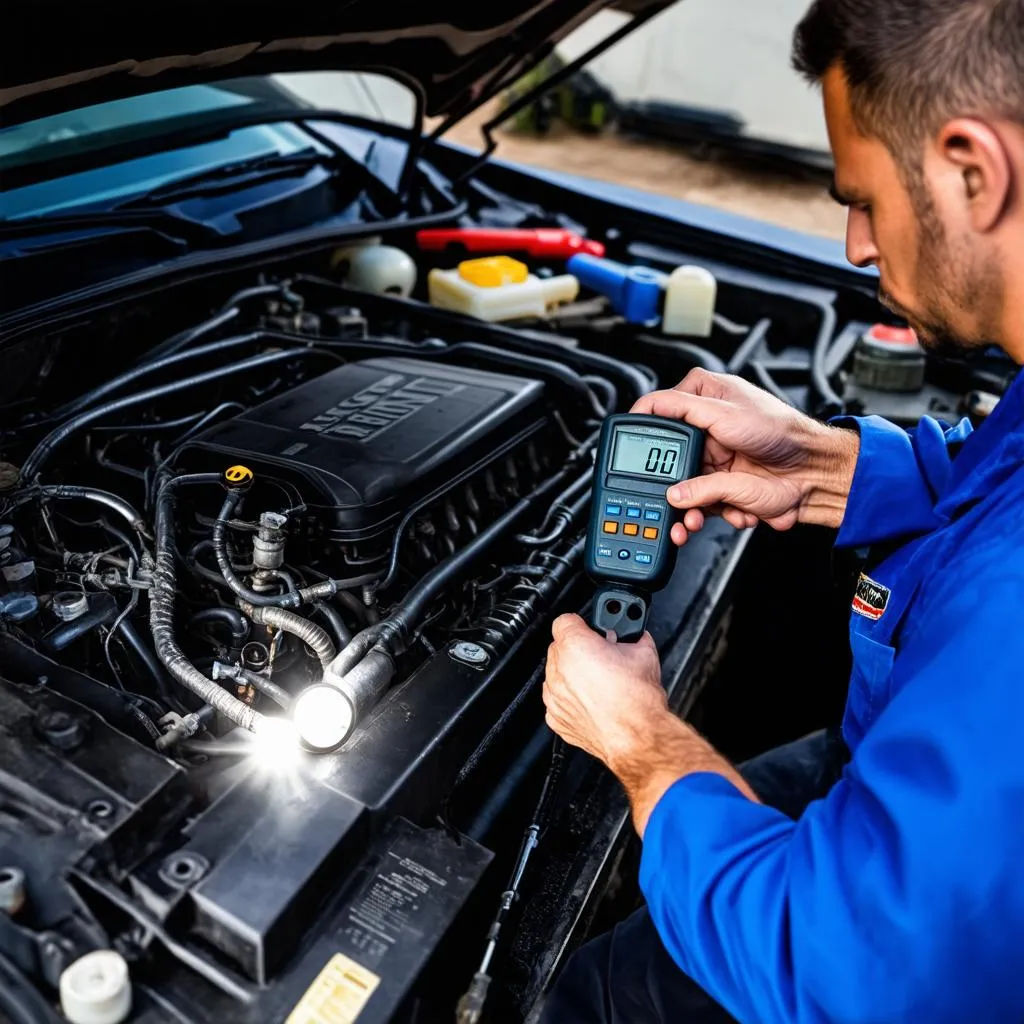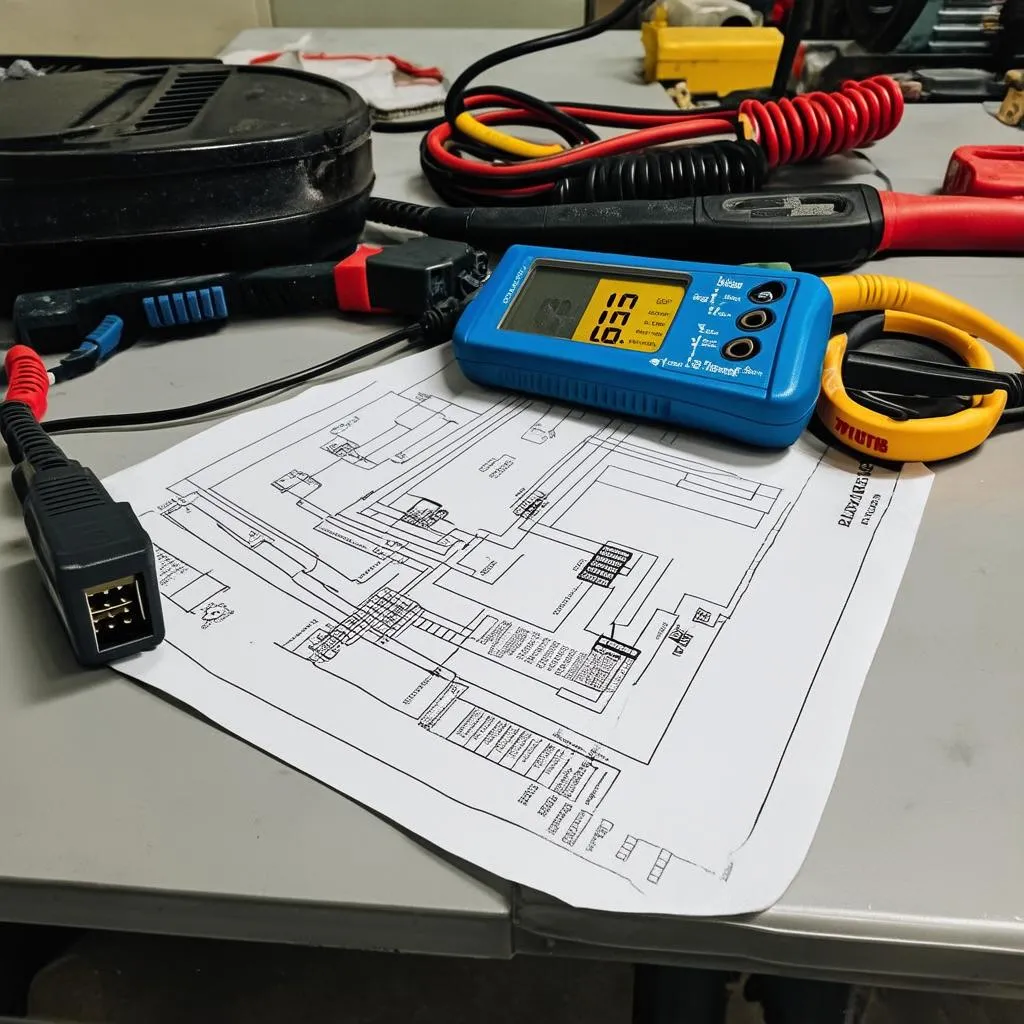Imagine this: You’re cruising down the highway, late for an important meeting, when suddenly your car loses power. You glance at the dashboard and see a menacing yellow light – the dreaded “Check Engine” light. You manage to limp your car to the side of the road, heart pounding. What could be wrong? A quick scan with your trusty OBD2 reader reveals the cryptic code: P0122. Sounds scary, right? Don’t panic! This article will demystify the P0122 code and equip you with the knowledge to tackle this common car issue.
What is OBD Code P0122?
In the intricate language of your car’s computer system, the P0122 code signals a problem with the Throttle Position Sensor (TPS) circuit. Think of the TPS as a messenger, relaying vital information about the position of your gas pedal to the Engine Control Unit (ECU) – the brain of your vehicle.
A P0122 code specifically indicates that the ECU is detecting an unusually low voltage signal from the TPS. This could mean your gas pedal is telling your car to go slow when you want to accelerate, leading to sluggish performance and potential safety hazards.
Decoding the P0122 Code: Causes and Symptoms
Like a detective investigating a crime, we need to examine the potential culprits behind the P0122 code:
- Faulty Throttle Position Sensor (TPS): The most common cause, a malfunctioning TPS can send incorrect voltage signals, confusing the ECU.
- Wiring Issues: Damaged, corroded, or loose wiring within the TPS circuit can disrupt the voltage flow, triggering the code.
- Faulty ECU: In rare cases, a problem with the ECU itself can misinterpret the TPS signal.
- Mechanical Issues: A sticking or binding throttle body can also lead to inaccurate TPS readings.
“A thorough diagnosis is crucial when dealing with P0122,” advises automotive expert Dr. Michael Schmidt, author of “Automotive Electrical Systems Demystified.” “Simply replacing parts without proper testing can be costly and ineffective.”
 Mechanic Checking TPS Sensor
Mechanic Checking TPS Sensor
But how can you tell if your car is suffering from this electronic ailment? Here are some telltale signs:
- Illuminated Check Engine Light: This is your car’s cry for help!
- Poor Acceleration: Difficulty accelerating from a stop or while driving.
- Hesitation or Stuttering: The engine might hesitate or sputter when you press the gas pedal.
- Limp Mode: In severe cases, the car might enter “limp mode” to prevent further damage, significantly reducing engine power.
Navigating the P0122 Maze: Solutions and Precautions
Fixing a P0122 code usually involves a multi-step approach:
-
Read and Clear Codes: Start by reading the trouble codes with an OBD2 scanner and then clearing them. This helps determine if the code returns, confirming an active problem.
-
Inspect the TPS Circuit: Carefully examine the wiring harness and connector for any damage, looseness, or corrosion. Repair or replace any faulty components.
-
Test the TPS: Using a multimeter, test the TPS for correct voltage readings according to your car’s specific specifications. Replace the sensor if the readings are out of range.
-
Check the Throttle Body: Inspect the throttle body for any obstructions or binding. Clean or repair as needed.
-
ECU Inspection: If all else fails, the ECU might require reprogramming or replacement. Seek professional help for this complex task.
 Car Diagnostic Tools
Car Diagnostic Tools
While not a direct reflection of luck in the traditional sense, a well-maintained car is often perceived as having good “car karma.” Regular inspections and timely repairs can prevent minor issues from escalating into major headaches on the road.
Beyond P0122: Staying Ahead of Car Troubles
Remember, the P0122 code is just one piece of the puzzle. Familiarizing yourself with other common OBD codes can empower you to address car issues proactively.
Here are some similar codes you might encounter:
- P0120: Throttle/Pedal Position Sensor/Switch “A” Circuit Malfunction
- P0121: Throttle/Pedal Position Sensor/Switch “A” Circuit Range/Performance Problem
- P0123: Throttle/Pedal Position Sensor/Switch “A” Circuit High Input
Thinking of upgrading your diagnostic tools? Check out our selection of top-rated Dealer Scanner For European Cars on techcarusa.com
Is your car from a specific manufacturer? We have resources available to help you diagnose and troubleshoot issues for a wide range of brands, including:
- Ford
- Chevrolet
- Toyota
- Honda
- BMW
- Mercedes-Benz
Need expert help with your car troubles? Contact us on WhatsApp at +84767531508. Our team of automotive specialists is available 24/7 to assist you with all your diagnostic tool needs and car repair questions.
The Open Road Awaits: Drive Confidently, Drive Prepared
Encountering the P0122 code might seem daunting at first, but armed with the right information and a proactive approach, you can overcome this common car woe. Remember, regular maintenance, timely repairs, and a reliable OBD2 scanner are your best allies in keeping your car running smoothly and ensuring a safe and enjoyable driving experience.
Have any questions or personal experiences with the P0122 code? Share them in the comments below! Let’s keep the conversation rolling and help each other navigate the world of car repair.